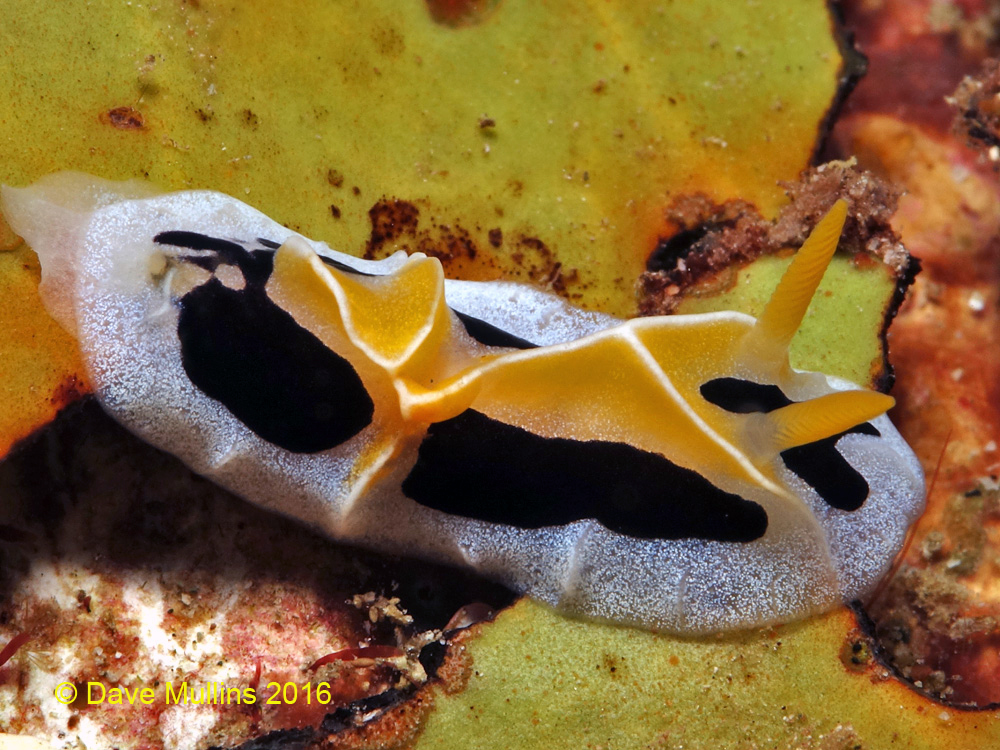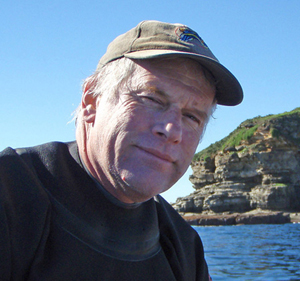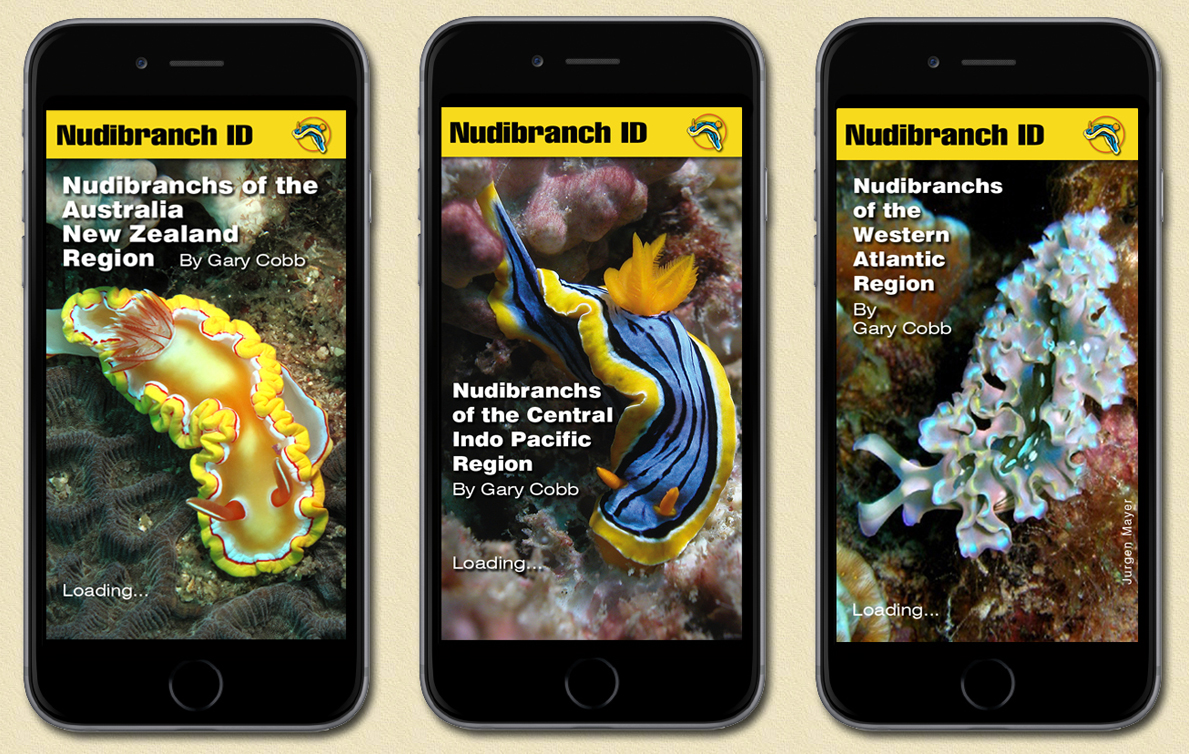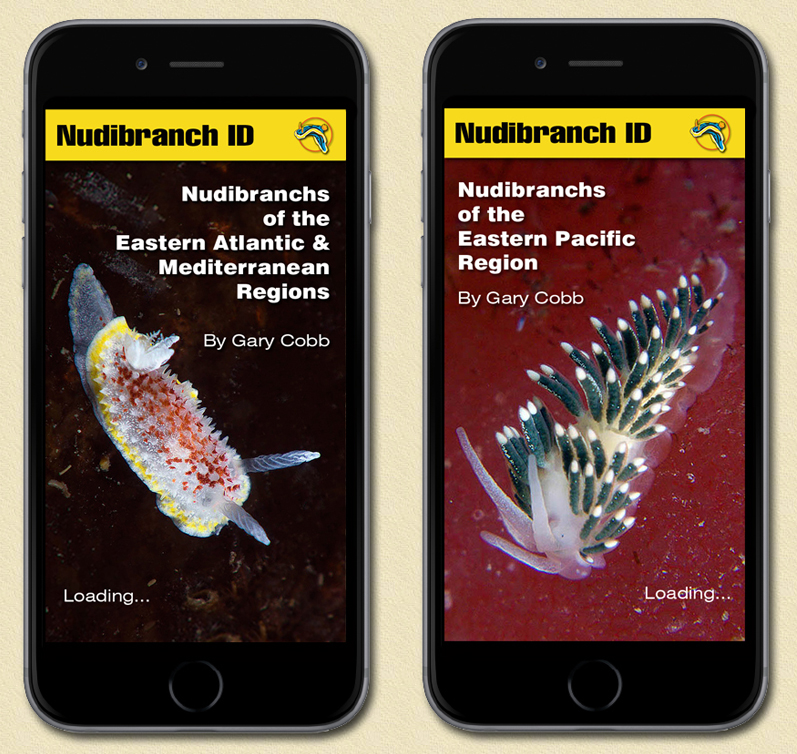 |
Reticulidia fungia
Image courtesy of Dave Mullins12 metres, Deacons Reef, Milne Bay, PNG
Sony DSC-RX100 in Nauticam Housing with wet macro diopter, Inon Z220 strobe.
Reticulidia fungia Brunckhorst & Gosliner, in Brunckhorst, 1993
Many nudibranch lovers are confused and frustrated by the phyllidiids - all lumps and bumps and mostly grey and black. I know of a couple of divers who even refuse to photograph them. I find them a bit of a challenge myself but a challenge to be met and mastered rather than avoided. However sometimes along comes a phyllidiid that no one can ignore and Reticulidia fungia falls into that category.
Reticulidia fungia is one of just four described species in the genus. Externally the main features distinguishing them from the other phyllidiids are the absence of any tubercles (lumps and bumps) on the notum and the presence instead of smooth reticulate ridges that have given their name to the genus. At first glance they can be mistaken for species of Halgerda with those dramatic steep sided ridges but the absence of dorsal gills soon sets the record straight.
Reticulidia fungia has fewer ridges that are rather more broadly based than those of the larger and similarly distributed Reticulidia halgerda. They are orange in colour with a white line along the crest and outlining the base. There is a main longitudinal medial ridge that bifurcates behind the rhinophores and from which most of the other transverse ridges arise. In between the ridges the notum is black with the mantle margin a blue/grey colour, that hue being created by a myriad of white specks overlaying a translucent base. It grows to a recorded size of 45 mm but is more typically seen around 30 mm with the juvenile illustrated here being 15 mm long.
Brunckhorst and Gosliner gave it the specific name of fungia due to the resemblance of its ridges to the septae of the Fungia solitary corals.
Reference:
Brunckhorst, D.J. (1993) The Systematics and Phylogeny of Phyllidiid Nudibranchs (Doridoidea). Records of the Australian Museum, Supplement 16: 1-107.
Dave Mullins
Queensland, Australia
marineimages@hotmail.com
March 2016
Send Dave email at: marineimages@hotmail.com
Dave Mullins on location
 |
|
Nudibranch reference material comes in many shapes and sizes but primarily books and websites. The problem with reference books is outdated material and their weight when travelling. Taxonomy is changing and adding or altering names at a rapid rate. The problem with the Internet is range and accessibility.
Now, thanks to the development by and ongoing efforts of Gary Cobb there is a series of smart device applications called Nudibranch ID. When the series is complete you'll be able to reference all the nudibranchs of the world.
No web connection required.
The Nudibranch ID App Series:
These field guides will place right at your fingertips, anytime and anywhere, an outstanding selection of Nudibranchs found throughout the World.
Featuring:
Indo-Pacific - version 19.0 - 700 species (available now)
Eastern Pacific - version 16.0 - 423 species (available now)
Australia and New Zealand - version 18.0 - 1139 species (available now)
Eastern Atlantic/Mediterranean Sea - version 5.0 - 680 species (available now)
Western Atlantic - version 4.0 - 498 species (available now)
Indian Ocean/Red Sea - (out soon)
Western Pacific - (out soon).
Available as iPhone or Android versions.
These are true Apps not just simple identification guides. Search functions and the ability to create lists for emailing are game breakers in this field. They are updated (for free) regularly.
Visit: www.inudibranch.com for a full description.
 |
 |
